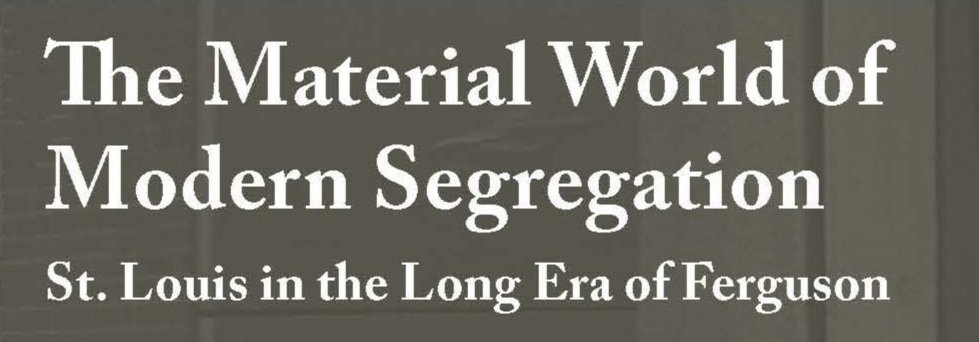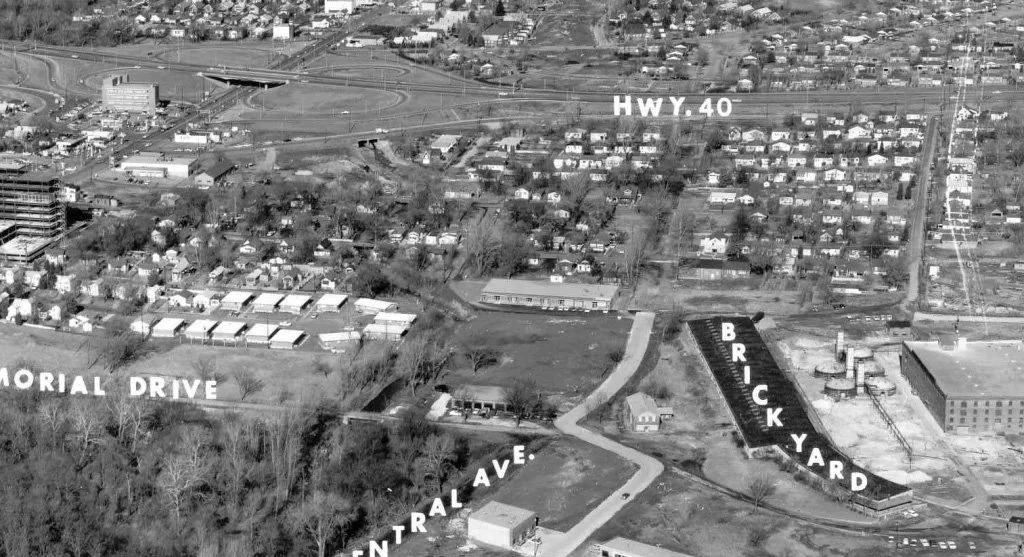This volume represents the collaborative efforts of colleagues from a variety of fields and institutions.
Our contributors include:
Eric Sandweiss (Indiana University, History)
Laurie Maffly-Kipp (WUSTL, John C. Danforth Center on Religion and Politics)
David Cunningham (WUSTL, Sociology) with Christina Simko (Williams College, Sociology) and Nicole Fox (California State-Sacramento, Division of Criminal Justice)
Joshua Aiken (Yale, History and Law)
Jasmine Mahmoud (University of Washington-Seattle, School of Drama)
Heidi Aronson Kolk (WUSTL, Sam Fox School of Design & Visual Arts)
Matthew Fox-Amato (University of Idaho, History)
Michael Allen (WUSTL, Sam Fox School of Design & Visual Arts)
Iver Bernstein (WUSTL, History)
John Early (WUSTL, Sam Fox School of Design & Visual Arts)
Douglas Flowe (WUSTL, History)
Patricia Heyda (WUSTL, Sam Fox School of Design & Visual Arts)
Patrick Burke (WUSTL, Music)
Jonathan Karp (Harvard, American Studies)
Sylvia Sukop (WUSTL, Germanic Languages + Literatures)
Beth Miller (WUSTL, Writing and Communications Specialist, McKelvey School of Engineering)
Please scroll down to see reflections by some of the volume’s contributors as well as revealing images of their sites.
John Early offers his reflections on a basketball court in North St. Louis featured in his essay, “On the Surface of Things”:
“For over a hundred years, basketball courts across the United States have served as important social and recreational spaces for the formation of Black community, yet the courts in St. Louis Place Park currently bear witness to the erasure of Black community. Following decades of disinvestment, ninety-nine acres of the neighborhood adjacent to the courts was blighted in 2016 to make room for the $1.7 billion relocation of the National Geospatial-Intelligence Agency (NGA) West headquarters. While civic officials lauded this massive contract as a “transformative federal success” for the region, largely ignored amidst the hoopla was the displacement of Black residents from the places they lived, worked, worshipped, and called home.
The weathered asphalt courts in St. Louis Place Park might likewise be bulldozed one day, however their decrepit state belies the fact that they are rich with meaning and insight about the racial landscape of the city. The material textures, physical traces, and buried histories present at the blacktop invite us to consider counter-narratives of place—ones that problematize conventional assumptions about “run-down” urban spaces and reframe what (and who) is viewed as expendable. If we’re able to listen with care and attentiveness, space can speak for itself, and in ways that are not often given voice in public discourse.
Both at these basketball courts and other locations across the region, how might listening to the stories place tells help cultivate spatial practices that are more humanizing and equitable than those currently used?“
Aerial view of the basketball court in St. Louis Place Park, 2017. [Photo collage by the author]
Aerial image of Howard-Evans Place, circa 1960. [Photo credit: Brentwood Historical Society]
Homes on Grace Avenue, Evans Place, early 1990s. [Photo credit: Brentwood Historical Society]
Observations by Beth Miller on Howard-Evans Place, the site she explores in her MWMS essay, which can be read in its entirety here:
“Most people who travel the busy intersection of Brentwood Boulevard and Eager Road have shopping on their minds, not realizing that for 90 years, that piece of land with the consistently full parking lot was home to dozens of middle-class Black families. It was a community in which doors were rarely locked and everyone looked out for one another. That neighborhood, known as Howard-Evans Place, was at first home to descendants of former slaves who came to St. Louis through the Great Migration and eventually to many Black families who were able to buy their first new home.
But over the decades, developers saw that very visible corner as extremely valuable, and after years of being on the defense, the residents eventually sold the land on which their community was founded to make way for The Promenade at Brentwood, which provides tremendous support to the City of Brentwood through sales tax. Shortly thereafter, the existence of the neighborhood and the people who lived there were forgotten — marked only by a commemorative boulder at the rear entrance to the Promenade — and Howard-Evans Place became yet another St. Louis-area Black neighborhood wiped from the map.
Why does this keep happening, and what can we do to keep the history alive?”





